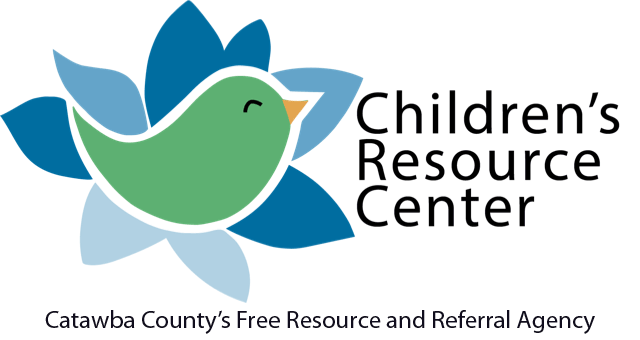Mitra Taghizadeh, MS, MT(ASCP)
- Former Assistant Professor
- Department of Medical and Research Technology
- University of Maryland School of Medicine
- Baltimore, Maryland
That is why I must use 2 different birth control methods at the same time symptoms quitting tobacco discount cytotec, starting 1 month before treatment mastitis order cheap cytotec line, during treatment for depression buy cytotec without prescription, and for 1 month after stopping therapy every time I have sexual intercourse symptoms norovirus cheap 100 mcg cytotec, even if 1 of the methods I choose is hormonal birth control. I will talk with my doctor about any medicines including herbal products I plan to take during my isotretinoin treatment because hormonal birth control methods may not work if I am taking certain medicines or herbal products. I may receive a free birth control counseling session from a doctor or other family planning expert. My isotretinoin doctor can give me an isotretinoin Patient Referral Form for this free consultation. I must begin using the birth control methods I have chosen as described above at least 1 month before I start taking isotretinoin. I cannot get my first prescription for isotretinoin unless my doctor has told me that I have 2 negative pregnancy test results. The first pregnancy test should be done when my doctor decides to prescribe isotretinoin. The second pregnancy test must be done in a lab during the first 5 days of my menstrual period right before starting isotretinoin therapy treatment, or as instructed by my doctor. I was told about a private counseling line that I may call for more information about birth control. I must stop taking isotretinoin right away and call my doctor if I get pregnant, miss my expected menstrual period, stop using birth control, or have sexual intercourse without using my 2 birth control methods at any time. I must have a negative result from a urine or blood pregnancy test done in a lab repeated each month before I receive another isotretinoin prescription. At least 1 method must be a primary form of birth control, unless I have chosen never to have sexual contact with a male (abstinence), or I have undergone a hysterectomy. I must use 2 forms of birth control for at least 1 month before I start isotretinoin therapy, during therapy, and for 1 month after stopping therapy. I must receive counseling, repeated on a monthly basis, about birth control and behaviors associated with an increased risk of pregnancy. Initial: 34 My doctor has answered all my questions about isotretinoin and I understand that it is my responsibility not to get pregnant 1 month before, during isotretinoin treatment, or for 1 month after I stop taking isotretinoin. Initial: I now authorize my doctor to begin my treatment with isotretinoin. Patient Signature: Date: Parent/Guardian Signature (if under age 18): Date: Please print: Patient Name and Address Telephone I have fully explained to the patient, the nature and purpose of the treatment described above and the risks to female patients of childbearing potential. I have asked the patient if she has any questions regarding her treatment with isotretinoin and have answered those questions to the best of my ability. A parent or guardian of a patient under age 18 must also read and understand each item before signing the agreement. Do not sign this agreement and do not take isotretinoin if there is anything that you do not understand about all the information you have received about using isotretinoin. I understand that there are serious side effects that may happen while I am taking isotretinoin. I understand that some patients, while taking isotretinoin or soon after stopping isotretinoin, have become depressed or developed other serious mental problems. Some patients taking isotretinoin have had thoughts about hurting themselves or putting an end to their own lives (suicidal thoughts). There have been reports of patients on isotretinoin becoming aggressive or violent. No one knows if isotretinoin caused these behaviors or if they would have happened even if the person did not take isotretinoin. Some 36 people have had other signs of depression while taking isotretinoin (see #7 below). Before I start taking isotretinoin, I agree to tell my doctor if I have ever had symptoms of depression (see #7 below), been psychotic, attempted suicide, had any other mental problems, or take medicine for any of these problems. Being psychotic means having a loss of contact with reality, such as hearing voices or seeing things that are not there. Before I start taking isotretinoin, I agree to tell my doctor if, to the best of my knowledge, anyone in my family has ever had symptoms of depression, been psychotic, attempted suicide, or had any other serious mental problems. Once I start taking isotretinoin, I agree to stop using isotretinoin and tell my doctor right away if any of the following signs and symptoms of depression or psychosis happen. I agree to return to see my doctor every month I take isotretinoin to get a new prescription for isotretinoin, to check my progress, and to check for signs of side effects. I will not give blood while taking isotretinoin or for 1 month after I stop taking isotretinoin. I understand that if someone who is pregnant gets my donated blood, her baby may be exposed to isotretinoin and may be born with serious birth defects. Initials: I now allow my doctor to begin my treatment with isotretinoin. Patient Signature: Date: Parent/Guardian Signature (if under age 18): Date: Patient Name (print) Patient Address Telephone (. This information does not take the place of talking with your doctor about your medical condition or your treatment. Birth defects (deformed babies), loss of a baby before birth (miscarriage), death of the baby, and early (premature) births. Female patients who are pregnant or who plan to become pregnant must not take Accutane. If you get pregnant while taking Accutane, stop taking it right away and call your doctor. Some patients taking Accutane have had thoughts about hurting themselves or putting an end to their own lives (suicidal thoughts). Accutane is a medicine taken by mouth to treat the most severe form of acne (nodular acne) that cannot be cleared up by any other acne treatments, including antibiotics. Accutane can cause serious side effects (see What is the most important information I should know about Accutane See the end of this Medication Guide for a complete list of ingredients in Accutane. Tell your doctor about all of the medicines you take including prescription and non-prescription medicines, vitamins and herbal supplements. Accutane and certain other medicines can interact with each other, sometimes causing serious side effects. Tetracycline antibiotics taken with Accutane can increase the chances of getting increased pressure in the brain. These medicines should not be used with Accutane unless your doctor tells you it is okay. Accutane can hurt the tube that connects your mouth to your stomach (esophagus) if it is not swallowed whole. You must talk about effective birth control methods with your doctor or go for a free visit to talk about birth control with another doctor or family planning 42 expert. Your doctor can arrange this free visit, which will be paid for by the company that makes Accutane. If you have sex at any time without using 2 forms of effective birth control, get pregnant, or miss your expected period, stop using Accutane and call your doctor right away. If someone who is pregnant gets your donated blood, her baby may be exposed to Accutane and may be born with birth defects. These organs include the liver, pancreas, bowel (intestines), and esophagus (connection between mouth and stomach). If your organs are damaged, they may not get better even after you stop taking Accutane. Accutane may affect bones, muscles, and ligaments and cause pain in your joints or muscles.
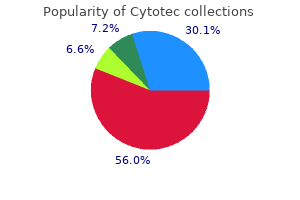
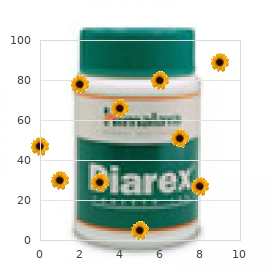
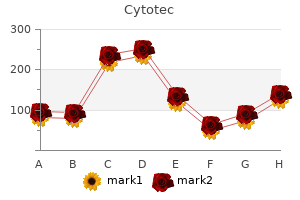
Management stroke care monitoring unit versus a conventional of Acute Ischemic Stroke medications pain pills order cytotec with american express. This analysis included discussed will generally be limited to the initial 2775 patients in whom thrombolysis was initiated 48 hours following ictus symptoms 9 days post ovulation purchase cytotec once a day. The odds of therapies may not be universal and may be dictated a favorable outcome were inversely associated with by local availability at individual stroke units treatments for depression generic cytotec 100 mcg line. As with delay from stroke onset to treatment treatment effect definition purchase discount cytotec line, with those other aspects of stroke care, however, close cooper patients treated earliest following their stroke having ation and inter-disciplinary communication are the most favorable outcome. More specifically, the analysis identified an significant advances during the last two decades has adjusted odds ratio for favorable outcome at 3 months been the introduction of intravenous thrombolysis as of 2. Of clinical importance, the following intravenous thrombolysis, and these results proportion of patients suffering secondary parenchy have helped to inform clinical practice. Appropriate patient selection is therefore important when considering whether a Intravenous thrombolysis is a standard therapy for patient may be suitable for thrombolysis treatment. There is therefore greatest when treatment is initiated early some evidence that thrombolysis is safe in elderly following stroke. The benefits extend with physiological age rather than their with chronological beyond 3 hours, however. The European license for alteplase does, shown that treatment at an average of 3 hours 15 however, exclude its use in those over the age of minutes and out until 4. Thrombolysis is contraindicated in patients remains as safe as earlier treatment in routine clinical with seizure at stroke onset due to the possibility of practice [54]. Patients with severe hypertension cannot start within 3 hours should not be deprived at the time of admission were excluded from the trials of therapy for the sake of a few minutes delay. The dose of alteplase is thus good reason for clinicians and regulatory author weight-dependent at 0. Ten percent of the total dose is admin window for alteplase treatment in favor of a 4. The benefits tion, including transcranial Doppler sonothrombo of thrombolysis are not necessarily seen immediately lysis and microbubble administration, but these are but are present after 3 months following stroke [7]. Indications and contraindications for intravenous In practice, due to the time constraint of initiating thrombolysis in acute ischemic stroke. Patients onset, it is not currently established as a routine with a delay > 3 hours, age > 80 years, blood pres treatment option in the majority of centers [1]. No of a stroke service will vary depending on local significant difference between intravenous and intra factors. Structuring thrombolysis services in places arterial thrombolysis has been demonstrated for patients where patient populations are spread over large rural with basilar artery occlusion in non-randomized areas can be particularly challenging. The import ant common factors which ensure a safe and effective Patients who meet the criteria for intravenous service are that patients should be assessed and diag thrombolysis remain in the minority, with rates for nosed by physicians experienced in stroke care [1, 11]. Whilst strategies are being with the appropriate experience and training, although developed to improve the rapid recognition and assess 232 this does not necessarily need to be a radiologist. Early aspirin use (within 48 hours of stroke onset) was associated with a significant Mechanical embolus removal reduction in death or non-fatal recurrent stroke. Although the absolute benefits pro in patients early after the onset of ischemic stroke were vided by early aspirin use are small, this intervention not realized until the publication of two large random is available to the majority of patients who have ized controlled trials, the Chinese Acute Stroke Trial suffered ischemic strokes. With a combined study population of more tial to reduce the number of recurrent vascular events than 40 000 patients, these two landmark studies pro by several thousand worldwide. This corresponded to 11 fewer without aspirin, confer additional vascular risk reduc 233 patients per 1000 treated with aspirin who were dead tion has been extensively investigated. Evidence exists Section 4: Therapeutic strategies and neurorehabilitation to support the use of the combination of aspirin and therapy, the reduction in recurrent ischemic stroke dipyridamole in secondary prevention [18], and also observed was almost identical to the risk excess for that the antiplatelet agent clopidogrel is at least symptomatic intracranial hemorrhage [22]. There is equivalent to aspirin and dipyridamole combined therefore currently no evidence to support the routine [19]. The combination of aspirin and clopidogrel use of anticoagulants in all patients in the early after has been shown to be of some value in patients with math of ischemic stroke. A significant and to commence appropriate secondary prevention anti almost 3-fold risk (odds ratio 2. Despite the lack of supporting evidence, stroke patients but showed an increased risk of symp some authorities would advocate early anticoagula tomatic or fatal intracranial hemorrhage without an tion with full-dose heparin in selected patients at high associated benefit and therefore its use is not advised [1]. Heparin for cardioembolic stroke There is currently no evidence to support the rou the International Stroke Trial investigated the use of tine use of anticoagulants in all patients in the early aspirin and subcutaneous unfractionated heparin in a aftermath of ischemic stroke. The beneficial effects of aspirin have already been discussed but the study also identified three fewer deaths within 14 days per 1000 patients treated with heparin (non-significant) and Neuroprotection significantly fewer early recurrent strokes (2. Studies of other patients who had been treated with intravenous unfractionated heparin preparations have also failed thrombolysis. Furthermore there was also no effect to show significant benefit when commenced early in patients with primary intracerebral hemorrhage. Although hypertension in the immediate post Indeed, it is also unclear as to whether pre-existing stroke period is frequently observed, blood pressure antihypertensive medication should be continued or tends to spontaneously fall within the first hours and withdrawn following stroke and this is the focus of days following the acute event, with the pattern of current research [37]. Precipitous falls in blood pressure have, blood pressure and both early and late death or however, been associated with poor outcome and dependency after ischemic stroke has been dem should be avoided [30, 31]. Cerebral perfusion becomes dependent upon stroke period unless there is a concurrent indication Section 4: Therapeutic strategies and neurorehabilitation to do so [1]. Such indications include hypertensive there is no evidence to support the routine active encephalopathy, myocardial infarction, aortic dissec lowering of hyperglycemia following acute stroke. Only small reduc lysis (185/110 mmHg), although these are based on tions in plasma glucose were achieved, with the mean clinical experience rather than specific evidence [1]. A short-acting intravenous the 90-day mortality did not differ significantly beta-blocker such as labetolol or intravenous nitrates between the groups although this study was limited may be useful in this situation as the effects are readily by slow recruitment and therefore underpowered. Sub-lingual A post hoc analysis identified an increase in the calcium-channel blockers should be avoided. Current clinical guidelines do reductions in post-stroke hyperglycemia may not be not advocate the active reduction of hypertension well tolerated. Until additional evidence becomes in the immediate post-stroke period unless there is a concurrent indication to do so. Hypoglycemia (serum required in order to determine the optimum method glucose < 2. Hyperglycemia has a reported prevalence of should be corrected by an intravenous dextrose infu up to 68% of acute stroke admission, and is not sion. The routine use of insulin regimes to control restricted to those patients with previously diagnosed post-stroke hyperglycemia cannot be recommended. The prevalence of previously unrecognized diabetes mellitus or impaired glucose tolerance may be between 20% and 30% [42]. Studies of come, with increasing stroke severity, higher mortal anti-pyretic medication and thermal cooling devices ity and reduced functional recovery observed in those have not provided conclusive evidence of efficacy but with hyperglycemia [41, 43]. Tight control of hyper it is good practice to monitor and treat pyrexia in the glycemia following myocardial infarction and in crit immediate post-stroke period. A rise in body tem ically ill patients being managed in intensive care perature can be centrally mediated following stroke, units appears to confer a beneficial outcome, and so but more commonly it suggests the presence of inter 236 it has been suggested that the same may be true in the current infection. Currently, however, ician to this possibility and, if clinically appropriate, Chapter 16: Acute therapies and interventions such infections should be treated. Raised body temperature following stroke is com Intracranial pressure should be maintained at monly treated with antipyretic medication. Early deterioration and death are often due to cerebral edema and rising intracranial pressure, which can occur within 24 hours of stroke, Cerebellar infarction but usually becomes evident between days 2 and 5 Neurosurgical opinion should also be sought in following stroke onset [1]. Medical therapy includes patients with space-occupying posterior fossa infarc airway management, oxygenation, pain control and tions. Clearly, pressure lowering and reduced hematoma expansion thrombolysis is contraindicated! Graduated compression stockings perfusion pressures in order to maintain adequate have not yet been confirmed to be effective in patients cerebral perfusion.

Both types of pain may respond to radiation tures medicine ball buy cytotec cheap, metastatic cancer to the cervical spine symptoms 5 days post embryo transfer purchase 200 mcg cytotec with visa. However medicine keychain cheap 100mcg cytotec free shipping, Cervical Rib or Malformed First both of these tests may be normal in the setting of severe pain symptoms 0f ms order cytotec amex. A pathological fracture in the shaft of the diagnosis and differential diagnoses are the same. The humerus severely exacerbates pain on movement, and only variation from the scalenus anticus syndrome is the this usually requires treatment with internal fixation. The code is the same and the reference for this syndrome is Social and Physical Disability the same. Definition Differential Diagnosis Dull aching pain in the shoulder girdle or upper extrem It is important to rule out referred pain to the shoulder ity due to tumor infiltration of bone. Definition Associated Symptoms Pain in the thyroid gland, aggravated by palpation and Hoarseness; dysphagia, when local spread has occurred. Complications System Stridor progressing to respiratory obstruction; dys Endocrine system. Main Features Social and Physical Disability Localized sharp or dull, aching or burning, occasionally Loss of voice following surgical treatment. Essential Features Associated Symptoms Persistent hoarseness, with soreness or pain supervening. A painful irritation in the throat on air flow during breathing, coughing, and swallowing due to tuberculous Code lesions. Definition Main Features An aching soreness in the throat, aggravated by swal Now rare. Local in larynx; spreads to ear (otalgia); con lowing, with hoarseness and dysphagia. In advanced cases there is severe pain in the laryngeal and pharyngeal area, System which may radiate to the ear. Associated Symptoms Main Features Hoarseness; cough; purulent sputum; night sweats and Initially, there is a complaint of sore throat, with irrita fever; weight loss. The pain spreads to the ear Signs (otalgia), possibly because of the involvement of the Inflammation of larynx; ulceration of larynx; chest vagus nerve. For explanatory material on this section and on section G, Spinal and Radicular Pain Syndromes of the Lumbar, Sacral, and Coccygeal Regions, see pp. Absolute confirmation relies on Definition obtaining histological evidence by direct or needle bi Cervical spinal pain associated with a metabolic bone opsy. I (S)(R) cates that this condition as diagnosed radiologically is Osteoporosis of Age causally associated with spinal pain. Osteoporosis of Some Known Cause Other than Age the condition of spondylosis is omitted from this Code 132. Definition Cervical spinal or radicular pain associated with a con Diagnostic Features genital vertebral anomaly. Imaging or other evidence of arthritis affecting the joints of the cervical vertebral column. I (S)(R) Diagnostic Features Rheumatoid Arthritis Imaging evidence of a congenital vertebral anomaly Code 132. Although they may be associated with pain, Osteoarthritis the specificity of this association is unknown. Clinical Features Diagnostic Features Spinal pain located on the lower cervical region. Cervical spinal pain for which no other cause has been found or can be attributed. This definition is intended to cover those complaints that for whatever reason currently defy conventional diagno Remarks sis. It presupposes an organic basis for the pain, but one that cannot be or has not been established reliably by clinical Code examination or special investigations such as imaging 13X. Patients given this diagnosis could in due course be ac corded a more definitive diagnosis once appropriate di Cervico-Thoracic Spinal Pain of agnostic techniques are devised or applied. Cervical spinal pain with or without referred pain in a patient describing a history of sudden Definition acceleration or deceleration of the head and neck of a Cervical spinal pain associated with sustained rotatory magnitude sufficient to be presumed to have injured one deformity of the neck. Clinical Features Diagnostic Criteria Cervical spinal pain, with or without referred pain, oc the presence of clinical features described above. Pathology No single pathologic entity can be ascribed to this condi Diagnostic Criteria tion. The spinal pain can be caused by any of a variety of Obvious rotated posture of the neck with or without injuries that may befall the cervical spine. Remarks As far as possible, the cause should be specified, but the the use of the term whiplash is not recommended. A induce spasmodic torticollis and should be distinguished more specific diagnosis could be entertained if the ap from muscular or articular causes. Neurological: Torticollis may be a feature of a basal features such as dizziness, tinnitus, and blurred vision ganglia disorder, either primary or drug-induced. Muscular: Sprain of a muscle may result in the pa but these are a minority of all cases. These associated tient assuming an antalgic, rotated posture that features may be coincidental or expressions of an anxi minimizes the strain on the affected muscle. This includes fixed atlanto-axial rotatory de formity and meniscus extrapment of a cervical zyga Pathology pophysial joint. Herniated nucleus pulposus: In the presence of a chemical or mechanical irritation of the nerve endings in herniated nucleus pulposus, a patient may adopt a re the outer anulus fibrosus, initiated by injury to the anu flex or voluntary antalgic rotated posture of the neck lus, or as a result of excessive stresses imposed on the to avoid the pain produced by the herniated nuclear anulus by injury, deformity or other disease within the material compromising a spinal nerve. Relief Remarks Torticollis due to neurologic disorder or muscle spasm Provocation diskography alone is insufficient to estab may sometimes be relieved by repeated injections of the lish conclusively a diagnosis of discogenic pain because motor nerve supply with botulinum toxin. X8fS Unknown or other diagnosis of discogenic pain cannot be sustained, whereupon an alternative classification must be used. X7*R Dysfunction Clinical Features Spinal pain perceived in the cervical region, with or References without referred pain to the head, anterior or posterior Cloward, R. X7aS Dysfunction the condition can be firmly diagnosed only by the use References of diagnostic intraarticular zygapophysial joint blocks. Arthrography must demonstrate that any injection has been made selectively into the target joint, and any Bogduk, N. Definition Pathology Cervical spinal pain stemming from a lesion in a speci Still unknown. May be due to small fractures not evident fied muscle caused by strain of that muscle beyond its on plain radiography or conventional computerized to normal physiological limits. Clinical Features May be due to osteoarthrosis, but the radiographic pres Cervical spinal pain, with or without referred pain, asso ence of osteoarthritis is not a sufficient criterion for the ciated with tenderness in the affected muscle and aggra diagnosis to be declared. Zygapophysial joint pain may vated by either passive stretching or resisted contraction be caused by rheumatoid arthritis, ankylosing spondy of that muscle. Diagnostic Criteria Sprains and other injuries to the capsule of zyga the following criteria must all be satisfied. There is a history of activities consistent with the of failure of calcium ions to sequestrate. Rupture of muscle fibers, usually near their myotendi Trigger points in different muscles of the cervical spine nous junction, that elicits an inflammatory repair re allegedly give rise to distinctive pain syndromes differ sponse. The Remarks wisdom of enunciating each and every syndrome, mus this category has been included in recognition of its cle by muscle, is questionable; there is no point attempt frequent use in clinical practice, and because a pattern of ing to define each syndrome by its allegedly distinctive muscle sprain is readily diagnosed in injuries of the pain patterns and associated features when the critical limbs. The Trigger Point Manual, Williams & Wilkins, Diagnostic Criteria Baltimore, 1983. Presumably involves excessive strain in Upper cervical spinal pain, suboccipital pain, and/or curred during activities of daily living by structures such headache, aggravated by contralateral rotation of the as the ligaments, joints, or intervertebral disk of the af atlas, associated with hypermobility of the atlas in con fected segment. Presumably the same as for sprains in liga wish to pursue such investigations, or if the pain arises ments of the appendicular skeleton. For this diagnosis to be sustained, the clinical tests used Code should be able to stress selectively the segment in ques 132. X6aR Arm Definition Cervical spinal pain ostensibly due to excessive strains sustained by the restraining elements of a single spinal Traumatic Avulsion of Nerve Roots motion segment. Definition Diagnostic Features Thoracic spinal pain occurring in a patient with a history A presumptive diagnosis can be made on the basis of an of injury, in whom radiography or other imaging studies elevated white cell count or other serological features of demonstrate the presence of a fracture that can reasona infection, together with imaging evidence of the pres bly be interpreted as the cause of the pain. Absolute confirmation relies on Clinical Features histological and/or bacteriological confirmation using Thoracic spinal pain with or without referred pain.
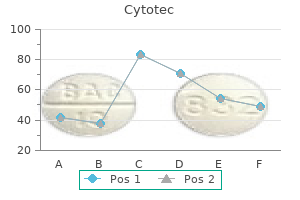
Syndromes
- A pencil to record results
- You have one of these cysts and develop a fever higher than 100.4 degrees Fahrenheit
- Hematoma (blood accumulating under the skin)
- Side effects from long-term use of medicines to control eczema
- Ulcerative colitis
- Ultrasound of the pelvis
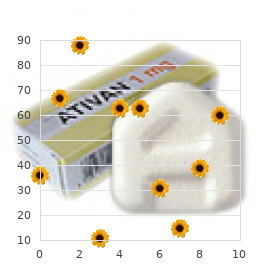
As described in Chapter 1 medications for gout cytotec 100mcg fast delivery, the European Union defines a rare disease as one with a prevalence of no more than 50 people per 100 medicine 014 purchase cytotec from india,000 population medicine 93 948 cheap 200mcg cytotec free shipping, whereas the United States sets a numerical threshold at 200 medicine 5513 order cytotec 200 mcg overnight delivery,000 people in this country. Survival for pancreatic cancer is so poor that the estimated number of new cases per year can be 6 higher than the estimated number of people surviving at a given time during the year. The demography, living conditions, and other characteristics of Europe and the United States likewise have much in common. Figures 2-1A-D show the distribution of rare conditions according to prevalence as presented in the Orphanet report. They reveal an overall distribution that is highly skewed to very rare conditions. For the conditions not included in the study, the distribution may be even more skewed given that the project began with what were thought to be the more common rare conditions (Eurodis, 2005). Short overview discussions of individual conditions in the Orphanet database vary in the specificity of their citations of sources. It is likely that there is an overestimation for most diseases as the few published prevalence surveys are usually done in regions of higher prevalence and are usually based on hospital data. The Orphan Drug Act, the Rare Diseases Act, and other policy initiatives discussed in this report have contributed to this knowledge by focusing attention, resources, and incentives on the study of rare conditions and products to treat them. Knowing the genetic, infectious, or other cause of a disease does not necessarily mean that researchers understand the mechanism of the disease. Moreover, a number of more common rare diseases such as cystic fibrosis and sickle cell disease have known causes and reasonably well understood mechanisms but lack cures, satisfactory treatments, or preventive strategies. Multiple different mutations in that single gene may result in disease of varying features or severity. In some rare conditions, multiple genes may contribute collectively to manifestations of the disorder (Dale and Link, 2009). Rare genetic conditions are often inherited but may also arise as a result of sporadic or chance mutations. Organizations supporting research on inherited conditions typically make gene identification a top priority as illustrated by the example of the Progeria Research Foundation in Chapter 1 and the examples in Appendix F. Others, however, are rare in wealthy countries but common in less economically developed countries. Some of these, for example, tuberculosis, were common in wealthy countries such as the United States before effective preventive measures or treatments were discovered and widely applied. They also seek to make existing treatments affordable for poor patients and nations. For example, research indicates that sickle cell trait contributes to resistance against malaria. For example, the committee found newspaper reports of rare cadmium, chromium, phosphine, and other poisonings in the United States, but none is listed as a rare disease. Several agents have received orphan designations for treatment of snakebites, but only one has been approved (Crotalidae polyvalent immune fab [ovine] [CroFab] for certain rattlesnake and other snakebites). Certain rare conditions are caused by the persistent adverse or toxic effects of treatment for another disease. Congress has directed that such supplements not be subjected to the same regulatory standards and review as medications. As is the case with illness caused by poisons, treatment-related illness is not a primary focus of rare diseases policy as such. This section and the next offer a broad, descriptive perspective on the range of preventive, diagnostic, and treatment measures; these topics could form the subject for a report in themselves. Some preventive strategies are relatively simple but striking in effect, while others are complex and demanding. Tertiary prevention, which involves treatment of evident disease to avoid further progression or suffering or to restore health or function, is considered here as treatment. Prevention is a mainstay of the infection control programs of public health agencies. Common primary prevention measures include immunizations (which are usually aimed at conditions that are or have been relatively common) and hand washing and other basic sanitation measures that are employed to control both common and rare infections. Other public and private programs seek to reduce population exposure to toxic agents such as asbestos and mercury. A different type of primary prevention is exemplified in the promotion of folic acid supplementation for women of childbearing age to prevent neural tube defects in their children. To prevent fetal exposure to harmful agents, many medications come with prominent warnings advising against use of the drug for pregnant women. Other drugs are approved with special precautions to limit the chance of fetal exposure. Preventive measures for certain rare diseases sometimes involve very personal and intimate decisions about marriage and childbearing, and some measures may raise ethical questions. High-risk couples may be advised about a range of options, including avoiding marriage to another person who is a carrier for the same disease, using contraceptive methods to avoid pregnancy, undergoing in vitro fertilization with embryonic screening, or obtaining prenatal screening with the possibility of pregnancy termination or advance planning for the birth of an affected child. Some fear that the result will be less attention to treatment research and assistance for people who have an already rare disease of diminishing prevalence. Newborn screening may also trigger genetic testing and counseling of family members. It thereby offers a further opportunity for prevention when monitoring or early treatment can be effective in delaying or limiting the consequences of the condition for an affected sibling or other family member. These critics call for more explicit comparisons with alternative policies of expected outcomes (benefits and harms) in relation to projected costs. Research use of retained samples from newborn screening programs has generated controversy about whether such samples should be used in the absence of informed parental permission (Maschke, 2009). This kind of diagnostic odyssey for a rare condition is often described in television shows and newspaper stories about diagnostic mysteries. Forty percent of respondents reported their first diagnosis was wrong, and 25 percent reported waiting between 5 and 30 years for a correct diagnosis. Accurate and timely diagnosis is especially important when early diagnosis can significantly affect the course of the disease. From May 2008 to approximately December 2009, the program received more than 2,300 inquiries and more than 900 medical records, and it accepted 190 patients for evaluation (Garnett, 2010; see also Henig, 2009). The diagnosis of many rare diseases has been limited historically by imprecise, cumbersome, or expensive testing and by limitations on physician and patient access to the most up-to-date information about rare diseases (including diagnostic criteria) and other diagnostic resources. Because of multiorgan involvement in the disease, patients with cystic fibrosis may be diagnosed by pulmonologists, gastroenterologists, allergists, or general pediatricians. One dilemma for clinicians and patients is that many rare diseases have neurological, digestive, or other symptoms that accompany a number of common and rare conditions, and depending on the disease and the individual patient, laboratory results may or may not be definitive. Finally, a patient may have an atypical presentation of a rare disease, which may make it almost impossible to arrive at a diagnosis. Physicians and patients may, however, be frustrated that some genetic tests are only available from a few laboratories based on decisions by patent holders (Cook Deegan, 2008; Kesselheim and Mello, 2010). Some tests or genetic testing services are marketed not to physicians but to consumers, a development that has provoked considerable controversy (see. Genetic counseling is recommended for individuals and families following the diagnosis of a rare genetic disorder to help them better understand the disorder, consider their options, and plan for the future. Many organizations that educate, assist, and advocate for patients with rare conditions seek to educate physicians about the disease. One goal is to increase the likelihood that physicians will recognize certain symptoms or constellations of symptoms as associated with a particular rare disease and will consider that disease among diagnostic possibilities that should be evaluated further. For example, the Cystic Fibrosis Foundation developed criteria to help standardize approaches to diagnosis (Rosenstein and Cutting, 1998). Theodore Woodward, a former professor at the University of Maryland School of Medicine in Baltimore (Sotos, 1989). Various textbooks, online sites, and other resources advise on treatment for a broad range of infections, including some that are rare; other resources advise on treatments for a broad range of poisonings, again including some rare poisonings.
Buy cheap cytotec 200mcg on line. Atlas Genius - Trojans [AllSaints LA Sessions].

